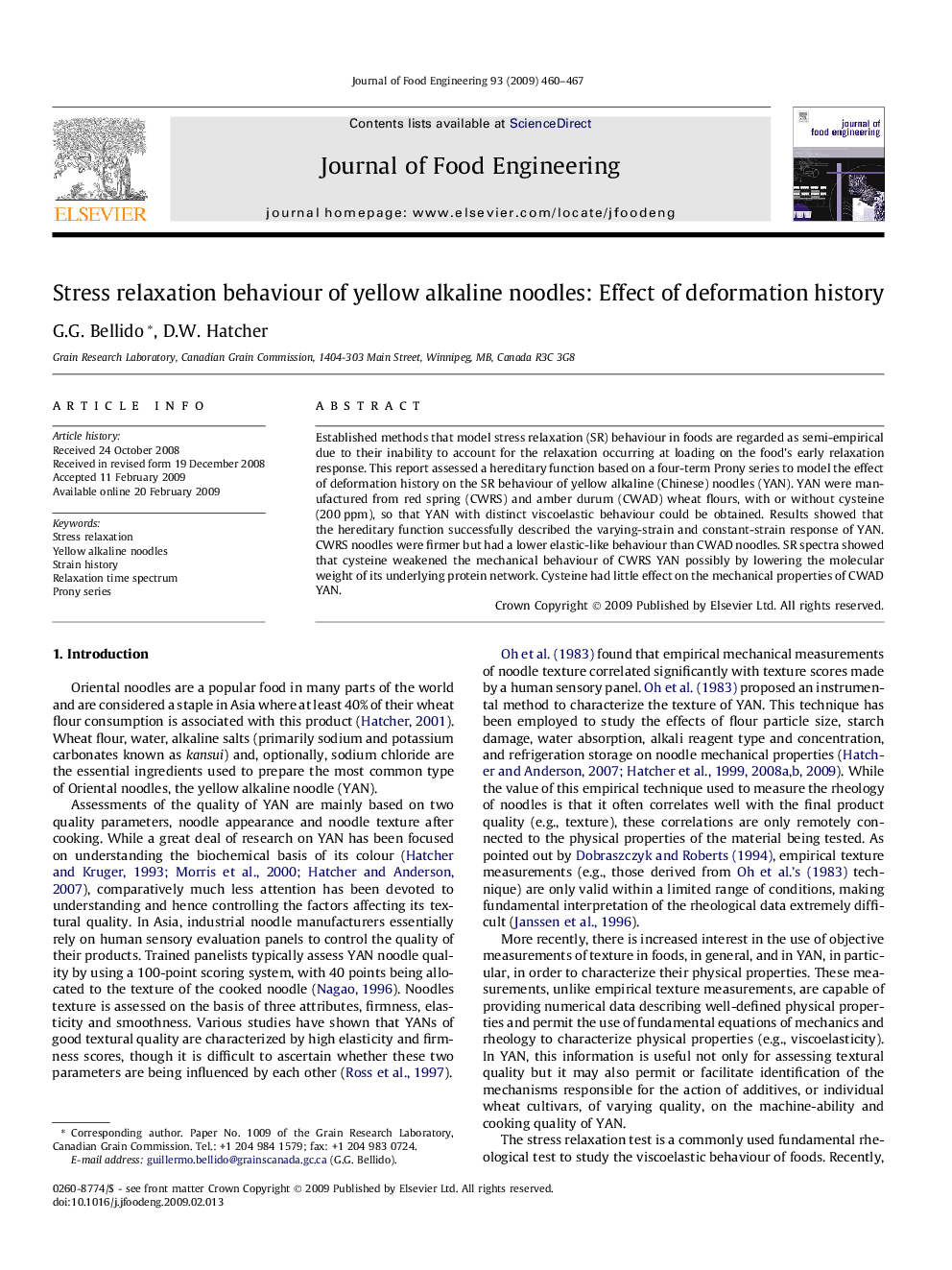| Article ID | Journal | Published Year | Pages | File Type |
|---|---|---|---|---|
| 224565 | Journal of Food Engineering | 2009 | 8 Pages |
Established methods that model stress relaxation (SR) behaviour in foods are regarded as semi-empirical due to their inability to account for the relaxation occurring at loading on the food’s early relaxation response. This report assessed a hereditary function based on a four-term Prony series to model the effect of deformation history on the SR behaviour of yellow alkaline (Chinese) noodles (YAN). YAN were manufactured from red spring (CWRS) and amber durum (CWAD) wheat flours, with or without cysteine (200 ppm), so that YAN with distinct viscoelastic behaviour could be obtained. Results showed that the hereditary function successfully described the varying-strain and constant-strain response of YAN. CWRS noodles were firmer but had a lower elastic-like behaviour than CWAD noodles. SR spectra showed that cysteine weakened the mechanical behaviour of CWRS YAN possibly by lowering the molecular weight of its underlying protein network. Cysteine had little effect on the mechanical properties of CWAD YAN.
